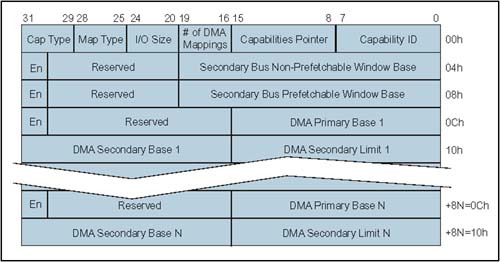The Address Remapping Capability Block
| This capability block allows software to control the HT to expansion bus bridge address for:
Figure 21-2 on page 479 illustrates the format of the Address Remapping capability block. The following sections describe each register and its remapping function. Figure 21-2. Format of the Address Remapping Capability Block The registers within the remapping capability block are briefly described below. Detailed discussion of their implementation is discussed in the following sections.
|
EAN: 2147483647
Pages: 182
